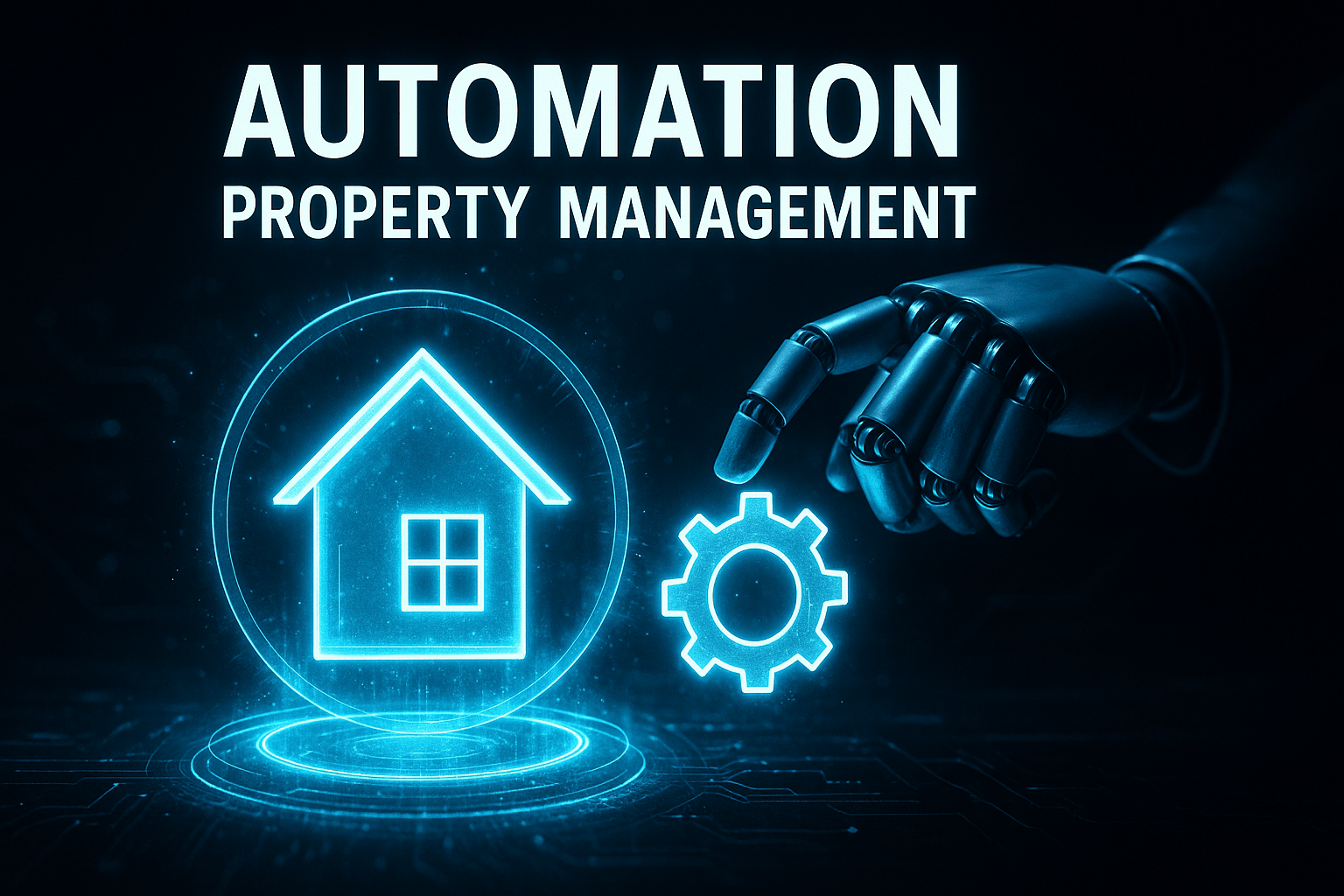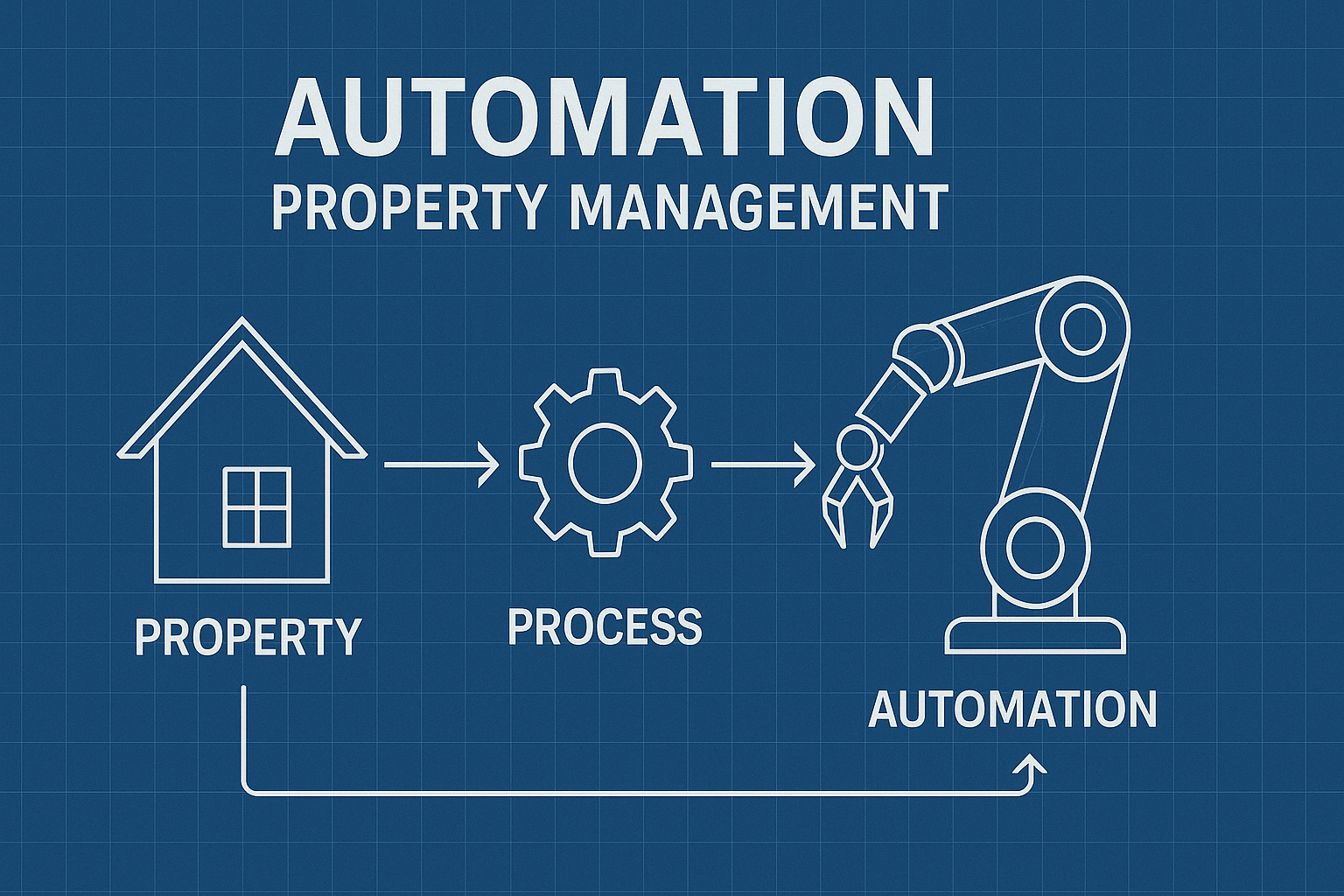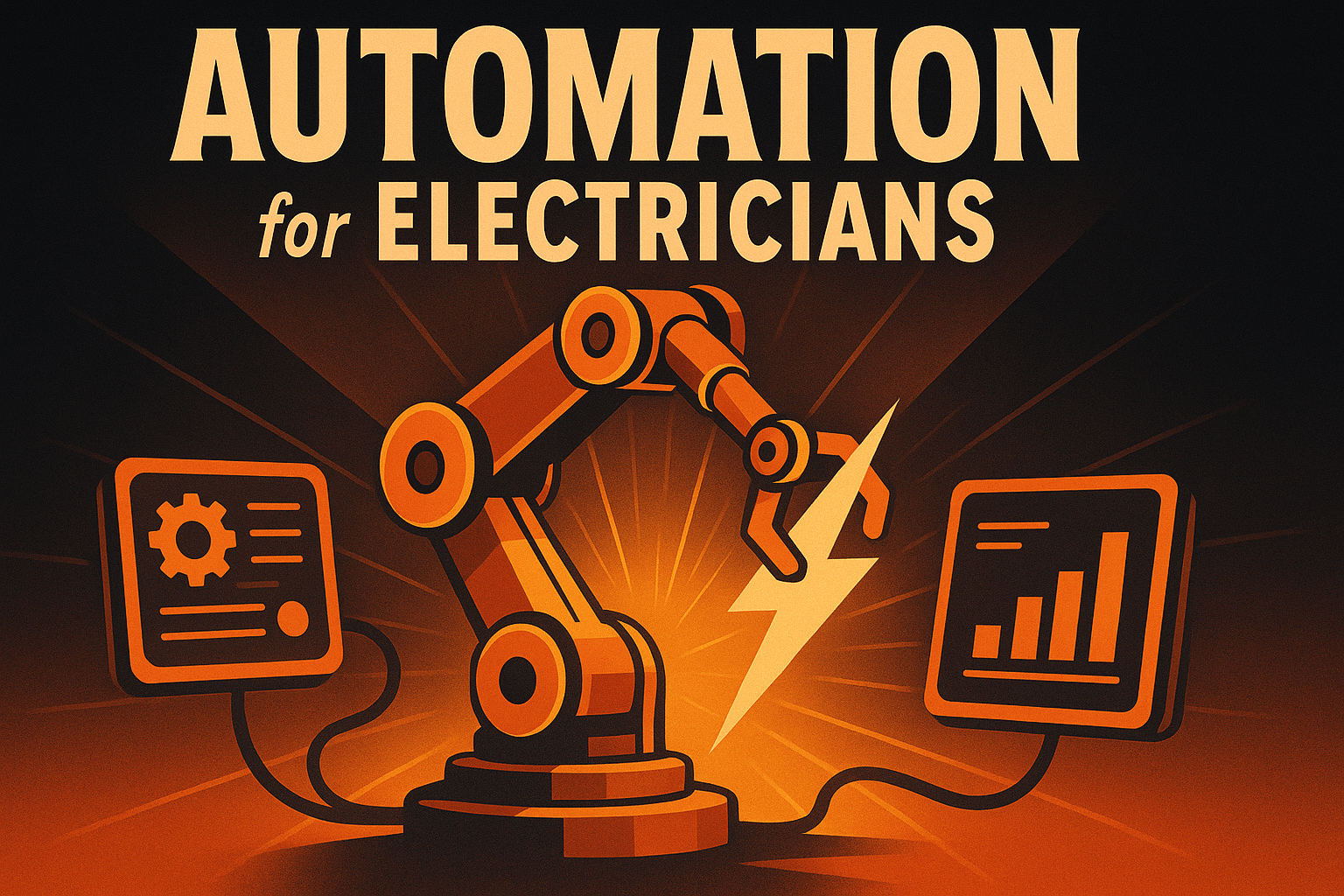Automation for Property Management: Transform Operations with Smart Workflows That Scale
by Design Delulu Editorial · October 5, 2025

Property managers juggle dozens of tasks daily—from tenant communications and maintenance requests to rent collection and compliance tracking. Manual processes create bottlenecks that slow response times, increase errors, and prevent your team from focusing on tenant relationships and portfolio growth. The cost of inefficiency isn't just time; it's lost revenue, tenant dissatisfaction, and operational chaos that compounds as your portfolio grows.
Automation transforms property management from reactive firefighting to proactive operations. By implementing smart workflows for repetitive tasks, you free your team to focus on high-value activities that actually grow your business. Modern automation tools handle everything from automated rent reminders and maintenance ticket routing to lease renewal workflows and tenant screening—delivering faster response times, consistent communication, and measurable time savings that directly impact your bottom line.

Why Property Management Automation Matters Now
The property management landscape has evolved dramatically. Tenants expect instant responses, owners demand real-time reporting, and compliance requirements continue to multiply. Manual processes that worked for 10 properties become unsustainable at 50, and impossible at 200. Automation isn't about replacing your team—it's about amplifying their effectiveness and creating scalable systems that grow with your portfolio.
Leading property management firms report saving 15-25 hours per week per property manager through strategic automation. These time savings translate directly to capacity for managing more units, faster tenant turnaround, improved satisfaction scores, and reduced operational costs. More importantly, automation eliminates the human error that leads to missed payments, delayed maintenance, and compliance violations that can cost thousands in penalties and lost revenue.
The competitive advantage is clear: property managers who embrace automation can handle larger portfolios with leaner teams, respond faster to tenant needs, and provide the transparency that owners expect—all while maintaining healthier profit margins than competitors still drowning in spreadsheets and manual follow-ups.
High-Impact Automation Opportunities in Property Management
Not all automation delivers equal value. The key is identifying workflows that consume the most time, create the most friction, or carry the highest risk when done manually. Here are the automation opportunities that deliver immediate, measurable impact for property management operations.
Tenant Communication and Engagement
Automated communication workflows handle routine tenant interactions without sacrificing personalization. Set up triggered email sequences for move-in instructions, rent reminders, lease renewal notices, and seasonal maintenance tips. Text message automation ensures urgent notifications reach tenants immediately, while chatbots handle common questions 24/7, reducing your team's response burden by 40-60%.
Smart automation segments tenants based on payment history, lease terms, or property type, delivering relevant messages at the right time. Late payment reminders escalate automatically from gentle nudges to formal notices, maintaining consistent enforcement while preserving tenant relationships. Move-out workflows guide departing tenants through the process, ensuring proper notice, scheduling inspections, and collecting final payments without manual tracking.
Maintenance Request Management
Automated maintenance workflows transform chaos into systematic efficiency. When tenants submit requests through your portal or app, automation routes tickets to the appropriate vendor based on issue type, property location, and vendor availability. Priority assignments ensure emergencies get immediate attention while routine requests queue appropriately.
Status update automation keeps tenants informed throughout the repair process—from acknowledgment and vendor assignment to scheduled appointments and completion confirmation. Automated follow-ups collect tenant feedback after work completion, building quality accountability into your vendor relationships. Preventive maintenance schedules trigger automatically based on equipment age, seasonal needs, or usage patterns, catching problems before they become emergencies.
Rent Collection and Financial Operations
Automated rent collection eliminates the monthly scramble of tracking payments, sending reminders, and processing late fees. Recurring payment automation charges tenant accounts on schedule, while smart reminder sequences reduce late payments by 35-50% through timely, graduated notifications. When payments fail, automation triggers retry attempts, applies late fees per lease terms, and escalates to appropriate collection workflows.
Financial reconciliation automation matches payments to units, categorizes expenses, and updates accounting systems in real-time. Month-end close processes that once took days now complete in hours, with automated reports delivered to property owners on schedule. Automated invoice processing captures vendor bills, routes them for approval, and schedules payments, eliminating manual data entry and reducing processing time by 70%.

Building Your Property Management Automation Strategy
Successful automation requires thoughtful strategy, not just tool implementation. Start by mapping your current workflows to identify bottlenecks, repetitive tasks, and high-error processes. Document the steps, decision points, and handoffs in each workflow—this clarity is essential for effective automation design.
Prioritization Framework
Evaluate automation opportunities using three criteria: time impact (hours saved weekly), error reduction (frequency and cost of mistakes), and scalability (does this get harder as you grow). Quick wins typically include rent reminders, maintenance ticket routing, and move-in/move-out communications—high-volume, highly repetitive workflows where automation delivers immediate value.
Medium-term opportunities include lease renewal workflows, vendor management systems, and property inspection scheduling. These require more configuration but deliver substantial ongoing value. Long-term automation projects like predictive maintenance, dynamic pricing optimization, and AI-powered tenant screening provide competitive advantages but need solid foundations first.
Technology Stack Considerations
Your automation infrastructure should integrate seamlessly with existing systems. Modern property management software offers native automation features, but connecting them with communication platforms, accounting systems, and vendor portals creates the most powerful workflows. APIs and integration platforms like Zapier or Make enable connections between tools, while purpose-built automation platforms provide more sophisticated logic and conditional workflows.
Consider data flow carefully—automation only works when information moves smoothly between systems. Ensure tenant data, payment records, and maintenance histories sync bidirectionally so automation decisions are based on current, accurate information. Data governance becomes critical as automation scales; establish clear rules for data entry, validation, and cleanup to maintain system reliability.
Implementation Roadmap
Roll out automation in phases to manage change and prove value incrementally. Phase one focuses on communication automation—rent reminders, maintenance updates, and tenant notifications. These workflows are relatively simple but deliver immediate time savings and improved tenant satisfaction.
Phase two tackles operational workflows like maintenance routing, vendor management, and lease renewals. These require more setup but eliminate significant manual work. Phase three addresses financial automation, including payment processing, reconciliation, and owner reporting. Phase four introduces advanced capabilities like predictive analytics, dynamic pricing, and AI-powered decision support.
Each phase should include proper testing, team training, and measurement of key metrics. Track time saved, error reduction, response times, and tenant satisfaction to quantify automation's impact. Use these metrics to secure buy-in for subsequent phases and demonstrate ROI to stakeholders.
Measuring Automation Success
Effective automation measurement goes beyond time saved. Track operational efficiency metrics like average response time to tenant requests, maintenance ticket resolution time, and rent collection rates. Monitor quality indicators including error rates, tenant satisfaction scores, and owner retention. Financial metrics should capture cost per unit managed, late payment percentages, and revenue per property manager.
Establish baseline metrics before automation begins so you can measure actual improvement. Set specific, measurable goals for each workflow—for example, reduce maintenance response time from 4 hours to 30 minutes, or decrease late rent payments by 40%. Review metrics monthly to identify what's working and where automation needs adjustment.
Don't forget to measure team satisfaction and capacity. Automation should reduce burnout, increase job satisfaction, and enable team members to focus on meaningful work. Track these softer metrics through regular surveys and conversations—they're leading indicators of retention and long-term success.

Best Practices for Property Management Automation
- Start with tenant-facing workflows that improve experience while reducing workload—rent reminders, maintenance updates, and communication automations deliver quick wins and positive feedback.
- Maintain the human touch for complex situations, conflicts, or emotional interactions—automation handles routine tasks so your team has time for relationships that matter.
- Build in escalation paths so automated workflows can hand off to humans when they encounter exceptions, edge cases, or situations requiring judgment.
- Test thoroughly before full deployment—pilot automation with a subset of properties or tenants to identify issues before they impact your entire portfolio.
- Document all automated workflows including triggers, decision logic, and exception handling so team members understand how systems work and can troubleshoot effectively.
- Review and optimize quarterly—automation isn't set-it-and-forget-it; workflows need regular refinement based on changing business needs and performance data.
- Ensure compliance by building regulatory requirements into automated workflows—fair housing rules, notice periods, and local ordinances must be encoded correctly.
- Train your team thoroughly on both using automation tools and understanding when to override or intervene—automation augments human judgment, not replaces it.
Industry-Specific Tips for Property Management
- Segment automation by property type—workflows for single-family homes differ from multi-family buildings, and commercial properties have unique needs requiring specialized automation.
- Leverage seasonal patterns by automating weather-related communications, HVAC maintenance reminders, and lease renewal campaigns timed to market conditions.
- Build automation around your busiest periods—month-end close, lease renewal season, and move-in/move-out cycles are prime opportunities for efficiency gains.
- Connect automation to owner reporting so property owners receive consistent, timely updates without manual report generation consuming valuable staff time.
- Use automation to enforce policies consistently—late fees, maintenance prioritization, and lease enforcement become equitable and defensible when handled systematically.
- Integrate with local vendor networks by automating vendor selection, dispatch, and performance tracking to build reliable partnerships that scale with your portfolio.
Frequently Asked Questions
Let’s level up your Property Management business
Need services that actually move the needle for Property Management? See our approach, pricing, and timelines—then book a quick call.
Additional Resources
- Schedule Your Automation Strategy Session
Book a complimentary 30-minute consultation to discuss your property management challenges, explore automation opportunities, and create a customized roadmap for operational transformation.
- View Our Property Management Automation Portfolio
Explore real-world property management automation projects showcasing workflow transformations, time savings achieved, and measurable results across residential, commercial, and mixed-use portfolios.
- Access Free Property Management Tools
Download free templates, calculators, and automation workflow guides designed specifically for property managers—including ROI calculators, implementation checklists, and process mapping templates.
Related Reading

Discover how automation for electricians streamlines scheduling, invoicing, lead tracking, and customer follow-ups to boost revenue and efficiency. Get started today.

Discover how automation streamlines furniture & home decor operations with GA4 tracking, attribution modeling, and data-driven dashboards. Get your 90-day implementation roadmap.
